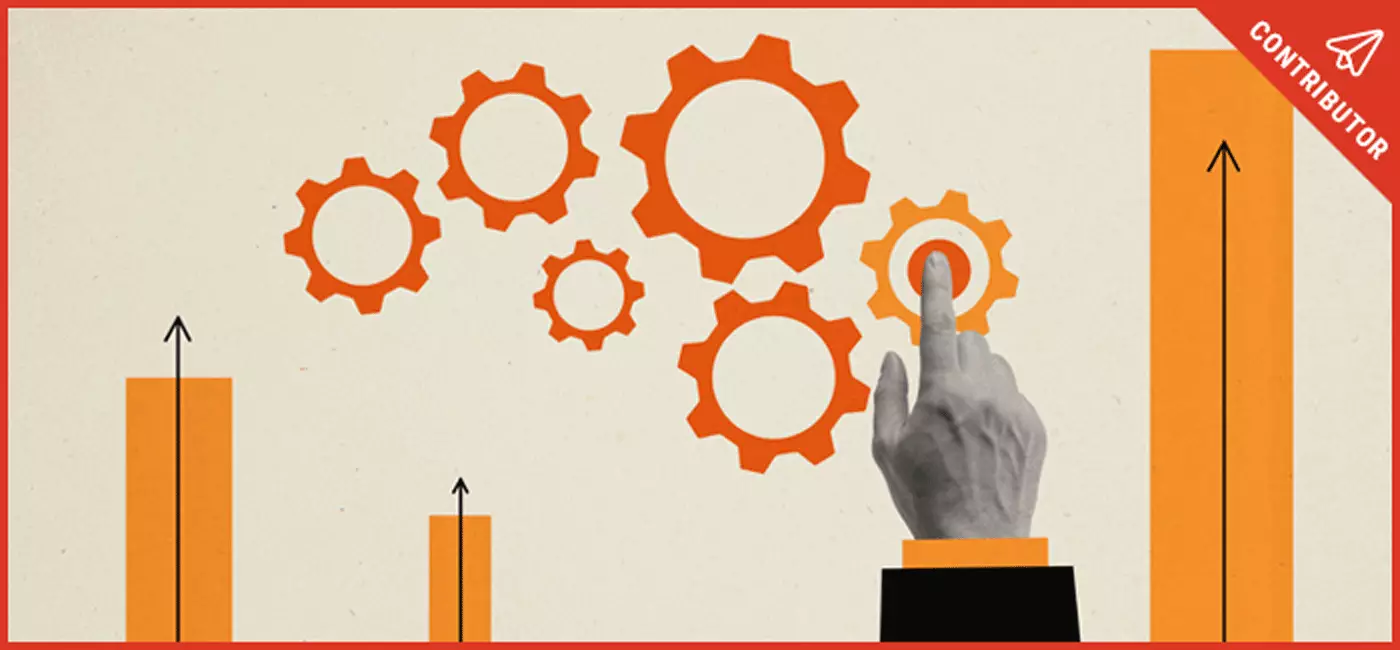How fintech impacts financial inclusion

Written by Dillon Price

Reviewed by Kathryn Uhles, MIS, MSP, Dean, College of Business and IT

Fintech (financial technology) has not only revolutionized banking. It also has enabled significant headway in global financial inclusion. Unlike traditional finance, fintech combines advanced technology with financial expertise to create innovative solutions to banking and finance that range from money transfers between individuals to investment and saving options.
If you’re considering a future in fintech, read on to learn how you can get involved, courses in fintech and which skills are needed for this career.
Understanding fintech and its impact on financial inclusion
Fintech is the integration of finance and technology. Its purpose is to make financial services more efficient and accessible, especially to underserved populations. From online banking to cryptocurrencies, these digital tools are reshaping the way people handle their money.
Fintech traces back to the late 1800s when the telegraph and steamships allowed financial information to cross borders efficiently. Fast-forward to the 1950s when credit cards emerged, followed by ATMs and online banking in the late 20th century. Then, the 2008 financial crisis sparked a wave of fintech startups eager to disrupt the traditional banking system.
According to the World Bank, 1.7 billion adults worldwide lack access to a bank account and the financial services that come with it. That translates to 31% of the global population, with women and youth disproportionately affected. Fintech has the potential to bridge this gap in three main areas.
Access to online banking services
Mobile phones have become transformative tools in global banking. Digital accounts cost just a fraction of what it costs to establish and maintain a traditional bank account. This better positions low-income individuals and businesses to participate in the financial system.
Fintech has helped roughly 1.2 billion previously unbanked adults gain access to financial services over roughly the last decade, according to the World Bank. Sub-Saharan Africa, South Asia, East Asia and Asia Pacific are just a few global regions that have adopted mobile money accounts.
By 2025, improved access to financial services could add $3.7 trillion to the GDP of emerging economies and create up to 95 million new jobs.
Affordability
The United Nations reports that fintech offers more affordable credit, savings and insurance products by minimizing the expense associated with traditional banking operations (e.g., transactional costs and payment services).
Plus, it offers the convenience of direct deposit and eliminates the need to travel to a physical bank.
Global economic growth
Mobile money apps have transformed economies in Africa and South Asia and allowed urban migrants to send funds home and boost savings.
This was explored on a small scale in a 2021 report from the Gates Foundation, which looked at the impact “mobile money” had on poverty in key regions of the globe. According to the report, mobile money reduced extreme poverty by 42% in Bangladesh and increased self-employment in northern Uganda by up to 6%.
What challenges come with leveraging fintech for financial inclusion?
While fintech offers significant opportunities, it’s not without its challenges.
The digital divide
One major fintech hurdle cited by the U.N. is the “digital divide.” While fintech has the potential to reach the underserved, many people in rural or remote areas lack reliable internet access and the digital means to use these services. Without bridging this gap, fintech may remain out of reach for many.
Automation and job loss
Fintech automation has streamlined financial services, but it could lead to job losses if displaced workers can’t find employment in other industries. It might also lead to increased demand for certain roles. Financial advisors, for example, who understand digital technology, cybersecurity and data analytics.
Consumer risks
While fintech has the potential to reach the unbanked and improve access to financial services, many users lack the skills to navigate digital platforms safely and effectively. This leaves them vulnerable to fraud, scams and poor financial decisions. Plus, consumers could face privacy risks and possibly unethical business practices from companies using fintech tools.
Advancing financial inclusion through technology (big picture)
Digital banking and mobile payments are creating new possibilities worldwide. With fintech leading the charge, traditional banks are being pushed to keep pace.
Digital banking has opened the door for the underserved to join the global economy with fast, affordable and customized financial services. During the COVID-19 pandemic, digital platforms proved their value by enabling governments to quickly distribute emergency funds to vulnerable communities.
On top of that, the World Bank reports that mobile payments have slashed transaction costs for sending money across borders. What used to be an expensive process has become far more affordable, with fintech reducing fees from 6.8% to as low as 3.3%.
Can alternative credit scoring models change the game?
Traditional credit scoring models lean heavily on historical data. This excludes individuals who lack formal credit histories but still manage their finances responsibly. Alternative models address this gap by tapping into nontraditional data sources such as rental payments, utility bills and even transactional data from bank accounts.
Additionally, advancements in machine learning enable more precise credit scoring and allow fintech companies to predict credit risk more effectively. When applied to real-time data, it outperforms traditional models, especially during economic stress.
Despite the benefits, data quality, privacy concerns and a lack of standardized practices still exist. But as more financial institutions adopt alternative data, they may be able to improve credit access and financial inclusion.
How does microfinance and peer-to-peer lending help underserved communities?
Microfinance and peer-to-peer (P2P) lending offer financial access where traditional banks often don’t. Microfinance provides small loans and financial services to individuals and small businesses lacking collateral or a solid credit history. This helps entrepreneurs grow their businesses, boost income and, over time, improve their quality of life.
P2P lending takes it a step further by connecting lenders and borrowers through online platforms and cutting out the banking middleman. As a result, more people can access credit with lower interest rates and flexible terms.
That said, lending and borrowing are not without risk, especially when it happens between two parties who may not know each other and for whom the terms and conditions are either new or not outlined. In addition to researching lenders for reputability, borrowers should watch for red flags like extra fees, higher-than-acceptable interest rates and the terms for defaulted loans.
Collaboration and regulation in the fintech landscape
While fintech is driving innovation in global banking, it still relies heavily on collaboration with traditional brick-and-mortar banks and the structure provided by government regulations. These partnerships are designed to ensure that fintech’s rapid advancements remain secure, accessible and beneficial for consumers worldwide.
Partnerships between fintech and traditional banks make perfect financial sense: They combine the best of both worlds to boost innovation, inclusion and efficiency. Fintech firms bring speed, cutting-edge tech and easy-to-use solutions, while traditional banks offer a loyal customer base, regulatory know-how and solid infrastructure.
By teaming up, these sectors blend fintech’s digital innovation with the security and compliance that traditional banks have long established. According to the U.N., fintech partnerships can close global financial gaps, offer lower-cost services and improve access to important financial resources.
Additionally, when fintech companies and banks collaborate, they can fast-track the development of new products, push forward digital transformation and fuel sustainable growth across the financial landscape.
What role do regulations play in promoting financial inclusion?
Regulations provide a structured environment that promotes innovation while safeguarding consumers and financial stability.
While fintech itself isn’t regulated, per se, the services and goods encompassed within fintech are. That is to say, if a fintech firm offers banking services, it is subject to federal and state banking regulations.
Additionally, regulators focus on protecting consumers and investors and ensure transparency and ethical practices. This is especially necessary with the advent of AI and machine learning.
Regulators must also keep up with emerging risks in fintech to safeguard consumer privacy, particularly for large digital platforms. That includes addressing criminal activity, enhancing cybersecurity and managing competition policies.
How are privacy and security concerns being addressed?
Privacy and security concerns in fintech are being addressed through a mix of regulatory frameworks and technological innovations in different ways around the world. Strong data protection laws and secure digital identity systems can protect user information and help build trust in fintech services.
In Hong Kong, India and Singapore, for example, authorities have introduced centralized platforms that give residents a unique digital key. This allows them to verify their identity for any transaction — whether with public or private entities.
Other regions regulate the flow of customer information. For example, in the European Union, the new Payment Systems Directive (PSD2) lets payment account data — with customer consent — flow seamlessly between banks and third-party providers. The General Data Protection Regulation also provides strict regulations on how personal data is managed.
India, meanwhile, has created a centralized system to securely store and share customer financial data with firms upon receiving client approval.
As for the U.S., fintech companies should take several approaches to ensure customer privacy and security. Data encryption and compliance with consumer protection laws (such as the California Privacy Rights Act) are two significant steps organizations can take to offer safe and reliable financial services in a digital format.
Learn more about fintech degrees and financial inclusion
Ready to learn more about the future in fintech? Unlike traditional finance education, dedicated courses in fintech (finance and technology) explore modern questions around privacy, possibility and financial inclusion.
University of Phoenix’s Finance and Technology degree, as well as its online finance courses, equip you with practical skills that can help prepare you for the future. Want to learn more? Explore course offerings, or request information.

The advantage of fintech is that it puts control back into the hands of the consumer. So, they’re not as dependent upon banks, governments and financial institutions to manage their money. Marginalized communities will have greater access to money and increased opportunities for business development that weren’t available to them previously.
Joseph Aranyosi
Associate dean, College of Business and Information Technology
Read more articles like this:

ABOUT THE AUTHOR
Dillon Price is a detail-oriented writer with a background in legal and career-focused content. He has written and edited blogs for dozens of law firms, as well as Law.com. Additionally, he wrote numerous career advice articles for Monster.com during the company’s recent rebranding. Dillon lives in Western Massachusetts and stays in Portugal each summer with his family.

ABOUT THE REVIEWER
Currently Dean of the College of Business and Information Technology, Kathryn Uhles has served University of Phoenix in a variety of roles since 2006. Prior to joining University of Phoenix, Kathryn taught fifth grade to underprivileged youth in Phoenix.
This article has been vetted by University of Phoenix's editorial advisory committee.
Read more about our editorial process.